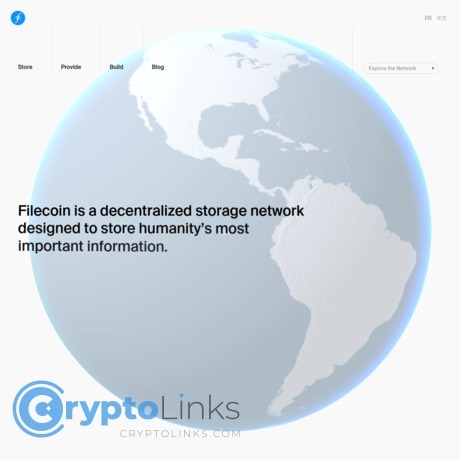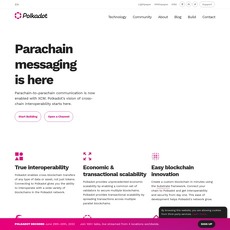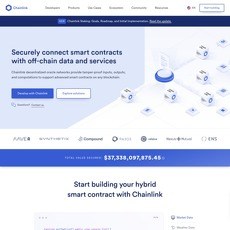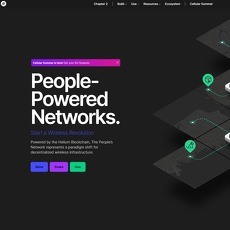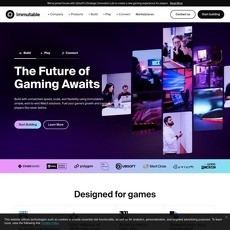Filecoin Review
Filecoin
filecoin.io
Filecoin.io: Full Website Review, Pros and Cons, and More
Filecoin's platform is mentioned on several leading cryptocurrency exchange sites where FIL can be purchased, sold, and exchanged, indicating its integrity and prevalence.
Distinct from several other platforms, Filecoin wants to enable subscribers to buy and rent storage space on the network rather than being a store of value or a platform on which DApps can be created.
If you plan to join or learn about the Filecoin.io network, you are just at the right spot. Read on as we highlight essential details about Filecoin in the subsequent paragraphs.
About Filecoin.io
In 2014, the Filecoin scheme was introduced as an incentive layer for the IPFS. As a decentralized data storage solution, the Filecoin network project whitepaper was eventually launched in 2017. The ICO for the Filecoin token raised more than $250 million, with the first $150 million raised below an hour.
Before this, there were pre-launch sales of two hundred million FIL from up to a hundred and fifty different investors in the project, and these tokens were sold at a half-price discount, eliciting public outcry, particularly given that only those who had made at least $200,000 every year were allowed to partake in the discounted sale. In contrast, the remaining three hundred million sold to the general public were sold at full price.
It's worth noting that no one got any FIL until the mainnet was operational in the fall of 2020, after which all pre-sold FIL started vesting in a linear order.
Who controls the Filecoin.io website?
Filecoin is an open-source, peer-to-peer digital currency. It is a peer-to-peer blockchain network for storing files, with built-in economic perks to ascertain that files are infallibly stored over time. Subscribers of Filecoin pay to have their data kept on storage miners, which are computers that store files and prove they have been stored properly over time. Anybody can join and utilize Filecoin if they want to store their files or get paid to store other people's data. Users, not any firm, control the storage available and the pricing.
Who created Filecoin.io?
Juan Benet, who also established the Interplanetary File System (IPFS), a peer-to-peer storage network, created Filecoin. He is also the CEO/creator and engineer of Al Protocol Labs. He has formerly worked as the CTO at Loki Studios. Benet is a computer scientist from the United States who studied at Stanford University.
Pro features of Filecoin.io
If you are contemplating joining the Filecoin.io network, these pro features might help speed up your decisions.
● Cost-effective
Filecoin eliminates intermediaries to establish a peer-to-peer storage economy that is efficient, straightforward, and cost-effective. Filecoin doesn't set rates; purchasers and sellers of storage have the freedom to bargain. Although storage fees vary depending on the arrangement, Filecoin has allowed consumers to store data for as little as 3% of what Amazon charges. Filecoin intends to establish a more efficient market for storage in the same manner that Airbnb, Amazon, and eBay smashed brick and mortar.
● Verifiable
Clients can authenticate the integrity and address of their data using the Filecoin protocol's cryptography instead of relying on an extrinsic cloud storage service. Proof of Replication (PoRep) and Proof of Spacetime (PoSt) are two new proofs introduced by the network. 13 PoRep checks that a piece of data has been duplicated to a unique physical storage area. PoSt ensures that this copied data is appropriately stored throughout time. The economic system of Filecoin is held together by these proofs.
● Decentralized
More than a thousand miners worldwide support the Filecoin network, making it decentralized. 9 Filecoin intends to be a strong protocol for file storage by curtailing the demand for centralized service providers, related to how Bitcoin employs economic inducements to be one of the most secure worldwide networks.
● Censorship-Resistant
A huge network of miners supplies storage capacity and computing power for Filecoin. Filecoin supplies censorship-resistant storage by banking on this decentralized network, which is essential for creating a truly decentralized digital ecosystem. Anyone can partake in censorship-resistant file storage with Filecoin. This is particularly crucial when technology firms try to meet the needs of a more polarized political setting.
● Robust
Subscribers can store data among many providers using the vast network of miners, ensuring their data is always accessible. Users can also ascertain that their data is stored correctly using mathematical proofs.
● Offline data transfer
Filecoin enables users to send substantial datasets to a storage miner while still authenticating the deal on-chain. The client provides a unique identity for the data, which the miner must match with the validated data for the transaction to be completed. This is a critical feature for large datasets that might cost hundreds of thousands of dollars to broadcast and transmit over months.
● Open participation
Anybody from wherever in the globe can buy or trade storage services. Filecoin's open participation provides a free market, leading to more worthwhile pricing and spontaneous invention. There are no limitations on who can use Filecoin or what they may build with it.
● Governance
Filecoin is governed similarly to Bitcoin and Ethereum via an informal governance policy. Upgrades are submitted via a Filecoin advancement proposal, which anyone may do.
● Open-source
Filecoin's code is available online for anybody to see, contribute to, and copy. This is a crucial feature for establishing trust in open networks.
User concerns about Filecoin
Highlighted below are some of the users' concerns about the Filecoin network.
● Decentralization
There may be hazards linked with the Filecoin network's level of decentralization. If there are several miners in the same jurisdiction, they may be subject to censorship or be harmed by natural disasters, compromising the network's security and power.
● Volatility
Token volatility can damage Filecoin's economics and the network's security. When token values plummet, miner profits are expected to follow suit. Mining is presently a function of Filecoin distribution and customer deals. Because clients and miners incur fees in fiat currency, Filecoin volatility is unlikely to affect client deals. The Filecoin distribution algorithm, on the other hand, is less flexible. When prices fall, we can anticipate low-margin miners to wind up operations, identical to what happens on the Bitcoin network.
● Network economics
The Filecoin network's security heavily depends on the system's economics, which incentivizes productive activity while penalizing unproductive attitudes. The network's security and reliability will crumble if the economics become unappealing to miners or customers.
● Regulatory
The Securities and Exchange Commission (SEC) has noted that specific digital assets may be classified as "securities" under federal securities laws. The SEC has only specified two digital assets, Bitcoin and Ethereum, that it doesn't aim to treat as securities. Other digital assets, including FIL, could be classified as a security, which could have serious ramifications for those digital assets. Furthermore, FIL's original method of sale is similar to that of specific digital assets offered in ICOs and later discovered to be securities, raising the danger of FIL being classified as a security.
● The mining of Filecoin
Mining Filecoin takes not only a ton of costly hardware but also skill with system deployment and management, which they warn that it is not simple on their site.
How to buy FIL
The FIL token has been mentioned on several notable exchange sites since Filecoin released its mainnet in October 2020. Coinbase, Huobi Global, and Binance are the most liquid exchanges at the moment, but it's also available on OKEx, Upbit, and DigiFinex.
As such, obtaining FIL is simpler than ever before and should take a few minutes in most circumstances.
We'll outline below how to utilize Binance to buy FIL with another cryptocurrency like Bitcoin (BTC) or Tether (USDT).
Step 1: First, you'll be required to create an account on Binance
Step 2: After logging in, go to the deposit page to see a list of available cryptocurrencies
Based on whatever asset you wish to exchange for Filecoin (FIL), you will be required to find your Bitcoin (BTC), Tether (USDT), Binance Coin (BNB), or Binance USD (BUSD) deposit address.
Fill your account with the chosen asset, then wait for it to be credited.
Step 3: The exchange interface must now be loaded. Choose the 'Classic' alternative from the pop-down menu after clicking the 'Trade' icon in the header.
Step 4: After loading this, use the right-hand search field to look for accessible FIL trading pairs. Choose the market you want to trade from the list displayed below.
Step 5: The appropriate trading interface will appear.
The order alternatives are listed below the chart. Fill in the amount you intend to spend on FIL under the 'Market' tab.
By moving the 'Total' button to 'Amount,' you can specify just how much FIL you want to buy.
When satisfied with the order, click the 'Buy FIL' icon to have it executed at the best possible price. After that, you'll be able to access this FIL from your Binance wallet.
Mechanics of the Filecoin Network
In the Filecoin ecosystem, there are five key players:
- Consumers pay miners to store and obtain data.
- Developers upgrade networks and applications are built on top of the protocol.
- Retrieval miners provide files to consumers on
- Storage miners help maintain the Filecoin network by storing files for customers.
- Token holders in the Filecoin ecosystem make FIL valuable by utilizing it as a channel of exchange and collateral.
Mining Economics
Storage providers must commit FIL tokens as collateral to begin mining so that when the miner is ready to give storage, it can be penalized if it performs poorly. The miner can begin minting blocks, conducting deals with customers, and collecting rewards for their efforts after the minimal collateral provisions are reached. Additional collateral may be arranged between the miner and the customer for every contract, along with the protocol collateral prerequisites.
On the Filecoin network, there are several different kinds of miners. Filecoin offers content distribution as well as storage services. Because content distribution efficiency is proportional to delivery distance, retrieval miners will pay more attention to address than storage miners, as they must be closer to the end customer to lessen latency.
Rewards
Storage miners on the Filecoin network are rewarded depending on their storage strength, which is a metric for how much valuable storage capability they provide to the network. Miners on the Filecoin network get block rewards proportionate to their storage power compared to the total storage power provider, related to how the hash rate works on Bitcoin. The quantity, quality, and time commitment of stored data affect storage power. This encourages miners to get involved in company growth to deliver the best data to the network.
Miners commit FIL and a fraction of their earned block rewards as collateral to assure that the data is infallibly stored for the agreed-upon time. A percentage of the miner's locked funds may be lost if the miner is offline for a brief time. If the miner is down for an extended amount of time, they may lose all of their locked funds. If a mistake occurs, the miner can report it themselves for a smaller penalty than if the chain is the first to notice it.
The response times of retrieval miners for a certain request influence the rewards for retrieval miners. Miners with low-latency, high-bandwidth connections near end users are suitable to obtain files and earn fees promptly.
Frequently Asked Questions (FAQs)
Is Filecoin built on Ethereum?
No, Filecoin is a blockchain network that exists independently of Ethereum. It has a unique consensus method as well as a mining operation.
Is Filecoin mining profitable?
Mining on the Filecoin network was so unprofitable when it launched in October 2020 that miners allegedly went on strike. As such, Filecoin had to adjust the mining rewards system since the way it operated implied miners were losing cash for securing the network (they received twenty-five percent right away and the other seventy-five percent over time).
This technique was intended to discourage FIL dumping, but it made profitable mining hard. Filecoin has become profitable as a result of a huge boost in the price per FIL and a change in the reward system, and Chinese miners have built a storage hardware shortage by buying several for Filecoin mining.
Will storing data on Filecoin be less expensive than other centralized cloud services?
Filecoin establishes a fiercely competitive data storage market. Instead of a fixed fee on the network, there will be several storage providers offering a variety of expenses. As noted on the Filecoin.io website, they expect Filecoin's permissionless methodology and low entry barrier to lead to some incredibly efficient operations and low-cost storage. However, they won't know for sure until the network is online.
Final Thoughts
Filecoin demonstrates the early promise of being the cloud storage backbone of the decentralized web movement, with almost eight hundred petabytes of storage space. Furthermore, if more applications and users turn to Filecoin for cloud storage, FIL demand may rise as miners fight for storage contracts.
Amazon and Google, for example, make a lot of money from cloud storage. This shows that there is a lot of interest in the market.
Clients who trust decentralized services may save a significant amount of cash. This cash would also flow back into the economy, as it would go to people and small enterprises, potentially improving people's lives significantly.
For more crypto project reviews & DeFi guides, visit CryptoLinks.com – your #1 blockchain resource!
Will Filecoin replace AWS? Probably not yet, but it’s a strong contender in decentralized storage.

